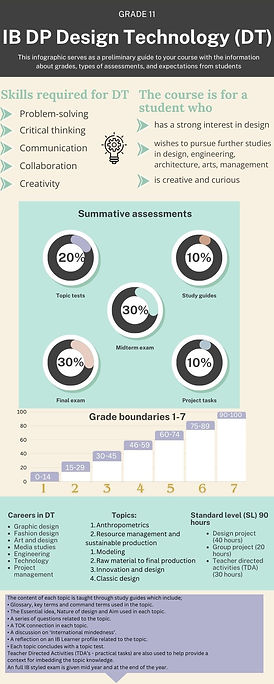

Student Assessments
Assessment is key to effective teaching and learning. To understand what our students know and can do, we must continuously assess student progress. This helps us to inform our instruction and determine the next steps for learning. Assessment can take many different forms and be used in various ways. Understanding the different types of assessments that we can use in the classroom is essential. We must also be able to determine whether we are using assessment as learning, of learning, or for learning.
Different Types of Assessments, video reflection
One of the best ways to gain a deeper understanding of assessments is to see them in action within the classroom. By watching and annotating videos encompassing different assessment types, you can develop an awareness of how to use multiple forms of assessments effectively in your classroom to inform teaching and learning. In this activity, you will brainstorm different types of assessments and consider when each can be used in the learning process. You will then watch a video of a teacher in the classroom and reflect upon their use of assessments.
Designing Formative Assessments
To be an effective educator, you must frequently check for student understanding. Such checks are called formative assessments. Formative assessments may take many forms and apply in in-person and online learning environments. Understanding different assessment forms before beginning your program's clinical portion will enable you to efficiently incorporate formative assessment into your planning and practice. You will consider accommodations and modifications you can use to ensure you reach all learners in your classroom.
Application of Formal and Informal Literacy Assessments
Identifying and implementing formal and informal literacy assessments enable teachers to better meet our students' needs. Literacy is essential in all grades and subject areas. Understanding how to use data gathered from literacy assessments to enhance the development of word-level fluency and comprehension in domain-specific texts allows us to provide each student with the support they need to be successful in the classroom.
Progress monitoring and identifying student needs
Communicating to families and students
You must communicate assessment results with families and students. This can be an intimidating process, but it is necessary. Developing partnerships with families is an essential factor in promoting student learning. Positive relationships with families can be developed early in the school year by reaching out and introducing yourself. Consistently updating them with positive feedback on their children’s performance develops trust. Working together requires teachers to listen to families and collaborate on strategies that support student learning. Understanding how to communicate assessment results to families and students can enable you to set each student in your class up for success.
How to best support families with resources to aid in literacy development.
Supporting families with reading resources is crucial for promoting a strong foundation of various skills, including literacy for students. Here are some ways to provide effective support:
-
Provide access to books: Encourage families to have a variety of age-appropriate books available at home. Offer recommendations for engaging and diverse literature that suits their child's interests and reading level. Provide information on local libraries, bookstores, and online resources where families can access books.
-
Promote read-aloud sessions: Encourage parents to read aloud to their children regularly, starting from a young age. Share the benefits of read-aloud sessions, such as vocabulary development, comprehension skills, and fostering a love for reading. Provide tips on engaging read-aloud techniques and suggest books suitable for interactive reading experiences.
-
Offer literacy activities: Share literacy activities that families can engage in together, such as word games, storytelling, writing exercises, or creating homemade books. These activities can make reading and writing enjoyable and help develop foundational literacy skills.
-
Share online literacy resources: Recommend reputable websites, apps, or online platforms that offer educational and interactive literacy resources. These resources can include reading games, phonics activities, and interactive storybooks that children can access with their families.
-
Encourage family discussions: Encourage families to have conversations about books and stories. Provide discussion prompts or questions that parents can use to facilitate meaningful conversations about the characters, plot, and themes of the books their children are reading.
-
Provide information on literacy milestones: Educate families about typical literacy milestones for different age groups. This information can help parents understand what skills their child should be developing at each stage and provide guidance on how to support their child's literacy progress.
-
Conduct workshops or webinars: Organize workshops or webinars for parents that focus on topics such as promoting reading at home, developing literacy skills, or supporting struggling readers. These sessions can provide parents with strategies, tips, and resources to aid in their child's literacy development.
-
Collaborate with community organizations: Partner with local community organizations, such as libraries, literacy nonprofits, or parent-teacher associations, to expand the range of resources available to families. These organizations may offer literacy programs, book clubs, or family events that promote reading and writing.
-
Provide multilingual resources: Recognize and support families who speak languages other than the dominant language in the community. Offer resources, books, and materials in multiple languages to ensure inclusivity and support literacy development in diverse linguistic backgrounds.
-
Foster a supportive network: Create a supportive network where families can connect with each other, share literacy tips, and exchange resources. This can be done through an online platform, social media group, or regular newsletters that provide updates and suggestions for literacy support.
It's important to tailor the resources and support to the specific needs and preferences of the families, taking into account their cultural background, language proficiency, and individual circumstances.
How to best communicate assessment data results to students and families.
Communicating assessment data results to students and families effectively requires a thoughtful and inclusive approach. The NWEA blog post suggests several strategies for better communication. Firstly, it's important to gather valuable context information about the learner, including their culture, strengths, and needs. This information can help make the learning journey more accessible and engaging for all students. Additionally, regular meetings with families to discuss the child's progress, providing a quiet study space at home, and emphasizing the importance of rest on school days and test days are recommended.
Furthermore, involving students and caregivers in identifying quality assessment processes can increase motivation and engagement. Teachers can ask students and caregivers about the best ways for students to demonstrate their knowledge and find optimal assessment times that align with students' energy levels. It's also crucial to explain the purpose of assessments and how the results will be used. Sharing assessment results along with classroom observations and discussing the child's learning progress as a whole can provide a more comprehensive picture. By focusing on strengths and maintaining open lines of communication, educators can create authentic learning partnerships with students and caregivers that are responsive, empowering, and effective.

